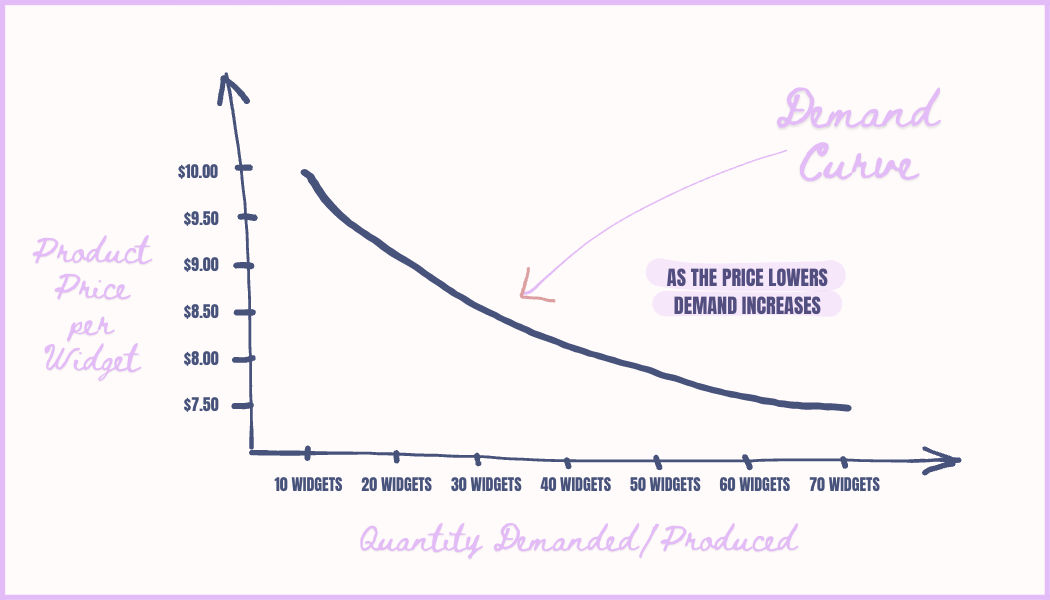
Economists and marketing metrics experts tell us customers buy products logically and rationally. For example, the concept of demand is expressed by a smooth curve. This demand curve assumes that if a company lowers the price of their product, set initially at $10 to $9.50, and then reduces the price even further by increments of 50 cents, the customer will buy more and more as the price decreases.
But …. In the real world, away from textbooks, spreadsheets, graphs and the rule book, consumer demand for a product isn't as smooth as they say. According to the best-selling author, consumer psychologist, and professor emerita at Golden Gate University, Kit Yarrow, "we buy what we want when we want, and we want it now!" Although this statement may apply to some purchases, it fails to capture the full complexity of consumer behaviour. In reality, customers often make impulsive purchases, while other times, they make more thoughtful and deliberate decisions. Putting aside the need for instant gratification, mental accounting and graphs in economics …. What Do Customers Expect To Pay?Often customers base their perceptions of price on what they perceive to be a customary or fair price. When the price of a product is above, or even sometimes below what they expect, they will be less likely to purchase that product or service. Consumers may think the quality is below par if the price is below what they expect to pay. And they may think you're taking them for a ride if you price your products too hide. In most instances, customers' perceptions of the everyday price of a product depends on their internal reference price. I'll try to explain this simply: Your customers or prospective customers have a set price or price range in their mind that they refer to when evaluating the price of your product or service. Their reference price may be the last price they paid for something similar or the average of all the prices they know of for similar products. Whatever purchase decision your customer makes, two outcomes are likely. Outcome #1 If the prices and other characteristics of the products under consideration are reasonably close, the customer will feel that your product quality is similar. This is called an assimilation effect. The customer thinks, "The price of this is about the same, so they must be alike. I'll be smart and save a few dollars." And so, the customer will choose the product with a lower price because the low price makes it look more attractive next to the higher-priced alternatives. This is why home or generic brands such as deodorants, vitamins, pain relievers, and shampoo sit beside national brands on the shelves of supermarkets: shoppers can easily calculate how much they can save by purchasing the home brand. Let's walk out of the supermarket and take a leisurely walk up high street to look at another example of the assimilation effect. The customer sees a designer handbag that is priced at $2,000. If they didn't stop at the corner cafe on the way up high street to down a couple of glasses of champagne, they wouldn't be grabbing for their Amex to grab that handbag. We all know that a $2,000 handbag is perceived as high, so when the customer sees another bag from the same designer that is priced at $1,800, this lower-priced handbag now seems like a better deal in comparison to the $2,000 bag, even though it may still be a high price. The customer, the sober one, has assimilated the price of the $1,800 handbag to be more reasonable in comparison to the $2,000 handbag. Outcome #2 If the customer perceives the prices of products are too far apart, a contrast effect may occur, whereby the customer equates the price difference with a difference in quality. "Mmmm, the lower-priced one is probably not as good as the higher-priced one, so I'll spend more on the more expensive one." This effect is often used by savvy business owners and marketers to encourage customers to purchase higher-priced items by providing a range of prices within the same category. Price-Quality InferencesLet's place ourselves in the shoes of the customer. Imagine you are in a shoe store looking for a pair of comfortable stilettos (is that a thing?) to wear to a party. You notice one well-known brand, which is $179.95; on the other display, you see an almost identical pair, but it's not a famous brand. These shoes are priced at $89.95. Which pair do you think you want? Which pair do you think is better quality? Many of us will pay the higher price because we believe the lower-priced unbranded shoes are not worth the risk. Customers make price-quality inferences about a product when they use price as a cue or an indicator of quality. Inference means that something is believed to be true without any direct evidence. If customers cannot judge the quality of a product by experiencing the product, they will assume the higher-priced product is the higher-quality product. Psychological Pricing StrategiesSneaky Tactics on How To Price Your Products To Increase Sales….without ripping the customer off. To be continued …. |



Please create a guest account or log in to leave a comment: